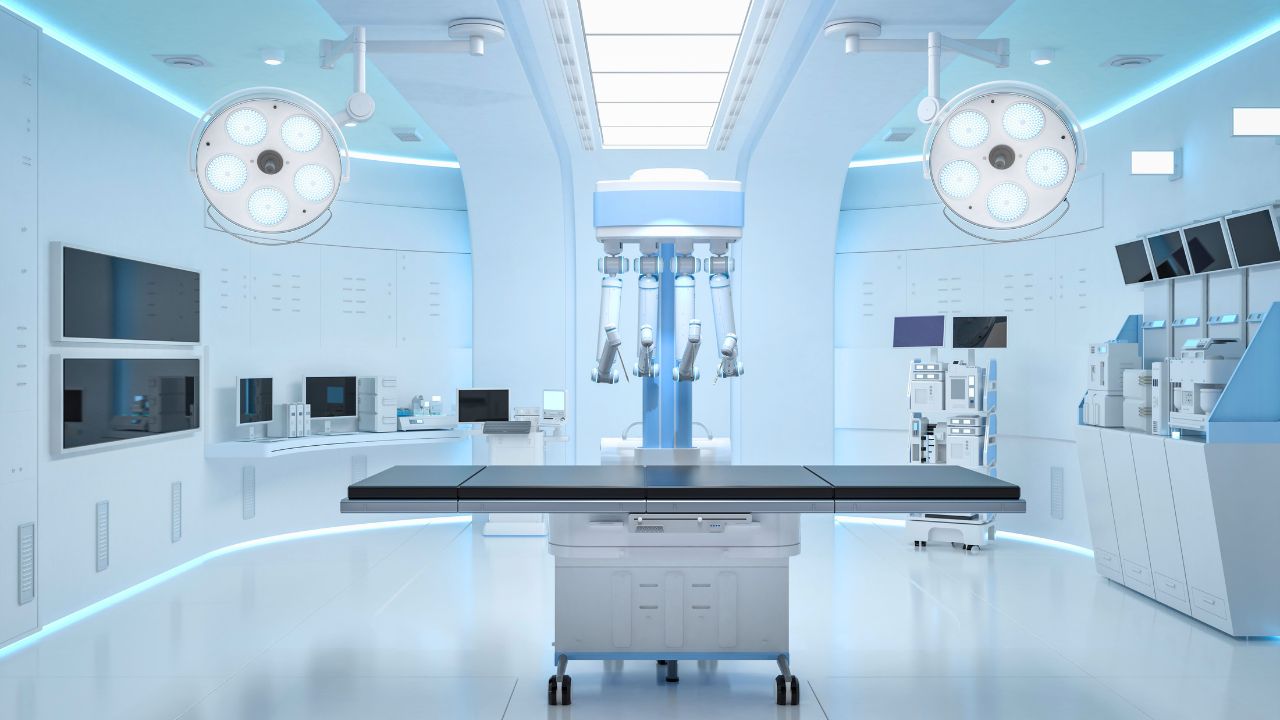The NHS is ushering in a bold new era of healthcare. Millions of patients across England are set to benefit from a significant push towards integrating robotics and artificial intelligence (AI) into daily operations. This ambitious “robot drive” represents a revolutionary step. It aims to transform efficiency, enhance patient care, and free up valuable staff time, strongly focusing on advanced applications like robotic surgery. This commitment to embracing cutting-edge technology demonstrates the NHS’s determination to innovate and deliver world-class services for the benefit of all.

The Evolving Landscape of Healthcare and the Need for Innovation
The healthcare landscape is constantly evolving. The NHS faces persistent challenges. These include rising demand, an ageing population, and increasingly complex medical conditions. Traditional methods, while foundational, are sometimes strained, necessitating innovation. Automation and AI offer powerful solutions. They can streamline processes, reduce human error, and augment human capabilities.
For years, robots have been present in highly specialised areas. Surgical robots, for instance, have performed intricate operations. Now, the NHS is scaling up. It is expanding the use of robots across a much wider range of functions. This move is not about replacing human staff. Instead, it aims to empower them. It seeks to free them from repetitive, time-consuming tasks. This allows them to focus on direct patient interaction and complex clinical decisions.
A Multi-Faceted Approach: Where Robots Will Make a Difference
The NHS’s robot drive is comprehensive. It targets various areas within hospitals and healthcare settings. The goal is to improve efficiency and safety. Key areas of focus include:
1. Automated Logistics and Supply Chain Management:
○ Challenge: Hospitals are vast and complex. Moving equipment, supplies, medication, and even waste is a constant, laborious task. This often takes nurses and porters away from patient care.
○ Robotic Solution: Autonomous mobile robots (AMRs) are being deployed. These robots can navigate hospital corridors independently. They transport meals, linen, pathology samples, and medical supplies. They can even deliver clean uniforms or collect waste. They use sophisticated mapping and obstacle avoidance technology.
○ Benefit: AMRs ensure supplies are where they need to be, precisely when needed, reducing delays. This also frees up porters for more critical patient-facing tasks. Nurses spend less time searching for equipment and can dedicate more time to their patients.
2. Pharmacy Automation and Dispensing:
○ Challenge: Dispensing medication is a meticulous process that requires high accuracy and is time-consuming. Human error, though rare, can have serious consequences.
○ Robotic Solution: Robotic dispensing systems are becoming more common. These robots can accurately pick, label, and dispense thousands of prescriptions daily. They manage inventory and flag potential errors.
○ Benefit: This significantly improves medication safety, reduces dispensing errors, and speeds up the process. Pharmacists can then dedicate more time to clinical roles, offering patient consultations or medication reviews.
3. Sterilisation and Decontamination:
○ Challenge: Maintaining sterile environments is paramount in healthcare. Decontaminating instruments is critical, but it is also a labour-intensive process.
○ Robotic Solution: Robots are being used in sterilisation departments. They handle hazardous materials and perform precise cleaning and decontamination tasks. UV-C light robots are also deployed for room disinfection. They autonomously move through rooms and emit powerful UV light, which kills bacteria and viruses.
○ Benefit: Robots enhance infection control. They reduce the risk of hospital-acquired infections (HAIs) and protect staff from exposure to harmful pathogens.
4. Assisted Surgery and Procedures:
○ Challenge: Certain complex surgeries require extreme precision and endurance. Manual techniques can be limited.
○ Robotic Solution: Surgical robots (like the da Vinci system) are already well-established. They provide surgeons with enhanced dexterity, magnified 3D vision, and greater precision. The current drive aims to expand access to these technologies and explore new robotic-assisted procedures.
○ Benefit: This leads to less invasive surgeries. It means smaller incisions, reduced blood loss, and faster patient recovery. It also enables surgeons to perform more complex procedures with greater control.
5. Rehabilitation and Therapy:
○ Challenge: Physical rehabilitation often requires repetitive, intensive exercises. Therapists’ time is valuable, and patients may need prolonged support.
○ Robotic Solution: Robotic devices are assisting with rehabilitation. Exoskeletons help patients relearn walking, and robotic arms assist with fine motor skills. These devices provide consistent, data-driven therapy.
○ Benefit: Patients can engage in more intensive and consistent therapy sessions, which can accelerate recovery and free up therapists to focus on more complex cases.
The Broader Impact: Efficiency, Safety, and Staff Welfare
The NHS’s robot drive goes beyond individual tasks. It aims for systemic improvements:
- Enhanced Efficiency: Automating mundane tasks streamlines workflows, reduces patient waiting times, and ensures that supplies are readily available, leading to a more agile healthcare system.
- Improved Patient Safety: Robots perform tasks with unparalleled precision and consistency, reducing the risk of human error. This applies to medication dispensing and instrument sterilisation. It directly enhances patient safety.
- Optimal Resource Utilisation: Resources are reallocated by freeing staff from routine chores. Highly skilled professionals, such as nurses and doctors, can focus on their core competencies.
- Staff Morale and Retention: Reducing burnout from repetitive tasks can improve staff satisfaction and morale, which is vital for retaining skilled healthcare professionals.
- Data-Driven Decisions: Robots generate vast amounts of data on their operations. This data can be analysed. It reveals insights into hospital logistics, resource usage, and patient flow, enabling continuous improvement.
Addressing Concerns: Human-Centred Automation
The introduction of robots naturally raises questions. Some worry about job displacement, and others express concerns about losing human touch. The NHS is addressing these concerns head-on. The strategy emphasises human-centred automation.
- Augmentation, Not Replacement: The focus is on robots augmenting human capabilities. They support staff, not replace them. Roles will evolve, staff will gain new skills, and they will work alongside technology.
- Ethical Considerations: The NHS is committed to ethically deploying AI and robotics. This includes data privacy, accountability, and ensuring technology supports human values.
- Training and Upskilling: Significant investment will be made in training staff. They will learn to work with and manage these new technologies, ensuring a smooth transition.
- Maintaining Human Connection: The aim for patient-facing roles is to free up time. This allows for more meaningful human interaction and improves the quality of care.
Investing in the Future: Funding and Partnerships
This ambitious robotic surgery drive requires substantial investment. The NHS is dedicating significant resources. This includes capital expenditure for purchasing robots and infrastructure upgrades. Partnerships with technology companies are crucial. Collaborations with academic institutions also play a key role. They drive research and development, ensuring the NHS remains at the forefront of healthcare innovation.
This investment is a long-term strategy. It aims to build a more resilient, efficient, and patient-centred healthcare system for generations. The initial rollout will inform future scaling and provide vital real-world data.
Total Assist: Powering the NHS’s Robotic Surgery Revolution
Total Assist is a proud partner in supporting the NHS’s groundbreaking robot drive. The successful integration of cutting-edge technology, including advanced robotic surgery systems, relies on a highly skilled and adaptable workforce. We play a crucial role in ensuring that the NHS has the right professionals to maximise the benefits of this revolution, including:
- Specialist Engineers and Technicians: Providing experts for the installation, maintenance, and programming of robotic systems, including those used in robotic surgery.
- IT and Data Scientists: Supplying professionals to manage the vast datasets generated by robots and AI, helping to optimise the performance of all automated systems.
- Clinical Informaticists: Bridging the gap between technology and clinical practice, ensuring seamless integration of data into patient care and supporting the adoption of new robotic procedures.
- Skilled Nurses and Allied Health Professionals: Ensuring existing staff are trained and confident in working alongside automated systems and supporting patients undergoing robotic surgery. We help upskill the workforce for the future of healthcare.
- Change Management Specialists: Supporting healthcare organisations through the transition to new automated workflows, ensuring staff embrace new ways of working with robotic technologies.
By providing access to a flexible and expert workforce, Total Assist empowers the NHS to embrace these innovations fully. We help accelerate the adoption of robotics and AI, including robotic surgery, ensuring that millions of patients across England benefit from a more efficient, safer, and technologically advanced healthcare system.
Conclusion: A Healthier, Smarter NHS for All
The NHS’s bold robot drive signals a new era for healthcare in England. By strategically deploying advanced robotics and AI, from logistical support to complex robotic surgery, the NHS is not just embracing technology. It is fundamentally reshaping how care is delivered. This revolution promises enhanced efficiency, improved patient safety, and a more fulfilling work environment for staff. Millions of patients stand to benefit from faster, more precise, and more reliable services. This commitment to innovation ensures that the NHS remains a world leader in healthcare. It builds a smarter, more resilient, and ultimately healthier future for everyone it serves.

